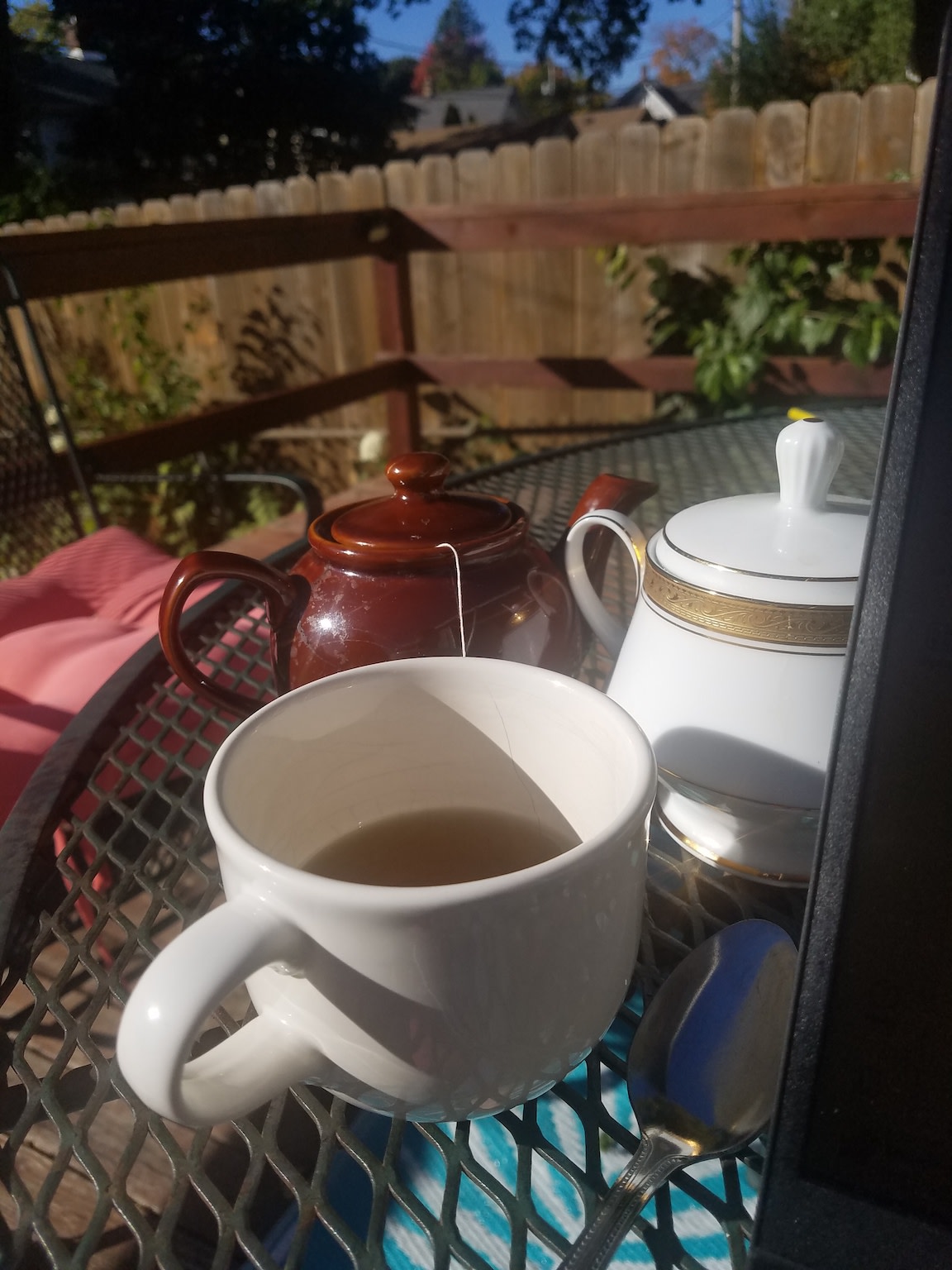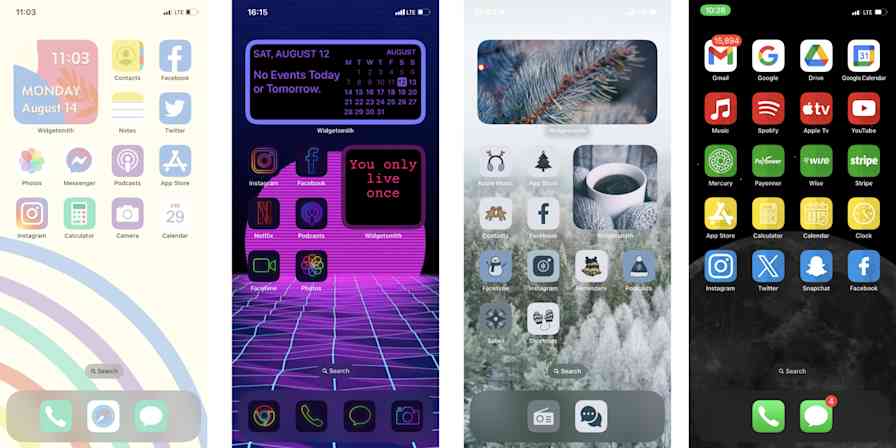Everyone has energy slumps—that irritable feeling before a meal or the post-lunch daze where you don't feel like doing anything. It's natural for your energy to fluctuate. But struggling with energy is usually your body's way of saying something's up.
For me, energy slumps are a huge challenge. Because I live with chronic mental health conditions, my slumps lead to brain fog, overwhelming fatigue, and difficulty concentrating.
I'd figured out how to manage them in my seven years of freelancing and odd jobs, but a few months ago, I started a full-time job. The transition was rough, but I'm finally starting to get the hang of how to manage my energy on this new schedule. Here are four things I've learned so far.
Eat lunch early
I knew from tracking my mental health and productivity a few years ago that I have the most energy in the mornings and evenings. Once I started working full-time, I tried to pinpoint the timing of my energy slumps, and—no surprise—found they matched my lowest-energy times: late morning to mid-afternoon.
Knowing that I was more likely to struggle between breakfast and lunch made this first change easier. I shifted my lunch time from 2 p.m. to 1 p.m. while keeping breakfast around the same (between 9 and 10 a.m.) to close the gap. Now I get more fuel right when I need it most.
One great way to try this on your own is by checking your chronotype or natural circadian rhythm. This will help you narrow down your most productive times and plan meals around them. Also, try dividing larger meals into smaller portions and eating more frequently to sustain your energy over a longer period.
Take an eye break
One of my biggest adjustments to full-time work has been eye strain.
I went from a 25-hour-per-week freelancer to 40+ hours of staring at a computer screen with fewer breaks. Within the first two weeks, I noticed an increase in headaches, brain fog, and blurred vision, and it took a while to pinpoint the cause and figure out solutions.
Before I fully realized what was going on, I tried to alleviate the headaches by taking a quick eye break every few hours. I'd close my eyes for two or three minutes and time myself with soothing music, a short audiobook chapter, or just a timer. I didn't have an eye mask, but I'd sometimes heat up a wet towel or turn off all the lights to keep things as dark as possible.
You can also just follow the 20-20-20 rule: after 20 minutes of work, look at something 20 feet away for 20 seconds.
Once I learned the cause, I began wearing glasses with blue light filters, a huge help. You can get basic reading glasses at any pharmacy without a prescription.
Tip: Check your work computer for settings to help eye strain. Most PCs have a setting called Windows Night light. For Mac users, try the True Tone or Night Shift. These are all versions of a blue light filter, so your screen may look a bit more yellow. Turning your screen brightness down can also make a huge difference.
Organize your tasks by effort
Have you ever heard of the spoon theory? It was introduced as a way to explain how people live with chronic illnesses. Basically, some everyday tasks take more effort or energy than others, depending on your abilities that day.
For those without a chronic illness, energy can work the same way. One day, you're super productive and run through your task list with time to spare. On other days, you just can't seem to concentrate on anything. Most tend to be a mix of both. Being able to check your energy levels, and choose tasks based on where you're at, can help you get done what you need to get done—even on bad days.
When I was freelancing full-time, I did something called intuitive scheduling, which basically meant checking my spoons and planning around them. Now, I do an energy pulse check a few times a day to see what I've got left to work with.
I tend to arrange my to-dos from "high-brain" (writing and editing articles and taking long meetings) to "low-brain" (research, outlining, and admin). When I'm in the middle of an energy slump, I'll stick to tasks that take less mental effort.
If you have to be "on" no matter what, try using a Pomodoro timer or time-tracking app to work on larger projects in quick bursts with short breaks in between. Or set aside a few minutes after a long meeting to do something restful, like making a cup of tea.

Tip: Block out time on your calendar during low-energy periods, so you can focus without distractions. Lots of tools, including Google Calendar, have built-in focus time features, and AI scheduling assistants are making this even easier.
Go for a short walk
It's no secret (to science or to you) that moving your body is good for you.
When I first started my job, I was already struggling to exercise for mental health reasons, so I found other ways to stay active. As a digital nomad, I'm used to working anywhere. This worked out well as a full-timer because it allowed me to rotate through a few different spaces throughout the day depending on how I was feeling. Working from a table and chair, a sofa with a lap desk, even the kitchen counter helped me to move around more. I'd also try to take a short walk or do an active chore—like laundry—after long meetings.
In an ideal world, getting outside is the best solution. Experts have been saying for years that being in nature has a ton of health benefits, including relieving stress and anxiety. If you find it hard to stay active during the workday, consider planning a longer walk on your lunch break, or right before or after work. On days I struggled to move, I took my work to the nearest outside space I could find, like a library bench, our Airbnb patio, or a cafe or coworking space a short walk away.
Tip: For more active work from homers, you can try working while standing or even from your treadmill. Work in-office or hybrid? Take a quick turn around the office or up and down a few flights of stairs to get blood pumping. You might also put your phone, water, or anything you need a lot just out of reach, so you have to stand up or take a few steps to get it.
Becoming more energy-efficient
Whether you're in perfect health or live with a condition that limits what you can do, we all have a finite amount of energy. When I started my new job, I had to learn a whole new set of limitations and find ways to overcome or work around them. If you can recognize how your body works best and make the most of high-energy times, you'll be able to manage your energy in a healthy, productive way.
Related reading:






